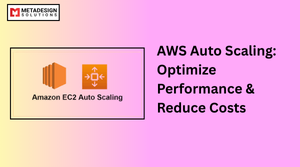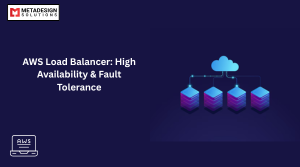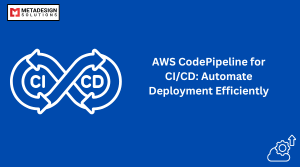1. Introduction to Multi-Cloud Monitoring
What is Multi-Cloud Monitoring?
Multi-cloud monitoring involves monitoring cloud environments that span multiple cloud service providers. For instance, your infrastructure may be distributed across AWS, Azure, and Google Cloud, and monitoring it requires combining data from all these sources into a unified platform.
Why Multi-Cloud Monitoring is Important
As businesses increasingly adopt multi-cloud strategies to improve redundancy, performance, and minimize risks, it becomes crucial to have a tool that can seamlessly monitor infrastructure across various clouds. Grafana is one such tool that enables real-time monitoring and visualization of multi-cloud environments in a single unified dashboard, allowing users to track performance, detect anomalies, and ensure operational efficiency.
- Overview of Grafana
What is Grafana?
Grafana is an open-source analytics and monitoring platform designed to enable users to visualize and analyze data across multiple sources. It is particularly powerful for creating dashboards that provide real-time insights into infrastructure and application performance. It supports a wide range of data sources, making it incredibly versatile for monitoring cloud services, server performance, and even custom metrics. By consolidating data from diverse platforms like AWS, Azure, Google Cloud, Prometheus, and various others, Grafana empowers users to make informed, data-driven decisions.
Grafana was initially created to address the growing need for effective visualization of time-series data. However, its versatility has expanded far beyond this, enabling users to track a wide range of metrics, logs, and events. It is frequently used by developers, operations teams, and system administrators to maintain visibility into the health and performance of applications, networks, and systems.
Key Features of Grafana for Monitoring
- Real-time Data Visualization: One of the standout features of Grafana is its ability to provide real-time data visualization. As cloud infrastructure grows increasingly complex, being able to track metrics in real-time is vital. Grafana provides a user-friendly interface where you can visualize cloud metrics, server performance, and even application health. These real-time visualizations allow users to instantly see trends, anomalies, or performance issues as they occur, ensuring quick responses to potential disruptions or inefficiencies.
With its powerful graphing and charting tools, Grafana can display a variety of data in formats that are easy to understand, such as bar charts, line graphs, histograms, and heatmaps. This makes monitoring complex multi-cloud systems more intuitive and actionable.
1. Custom Dashboards: Grafana allows users to create highly customizable dashboards that suit their specific monitoring needs. Instead of relying on generic, predefined dashboards, teams can design their dashboards with exactly the metrics they need to see, arranged in the way that is most useful for their workflow. Whether you are monitoring a cloud infrastructure’s resource consumption or tracking specific application performance, custom dashboards let you focus on the most critical metrics.
These dashboards can be tailored to different teams or roles. For example, a developer might care about application response times and error rates, while an operations team might focus on server health and availability metrics. Custom dashboards help teams work efficiently, as they can focus on the data that matters most to them.
2. Alerting & Notifications: Grafana’s alerting system is another key feature that adds immense value to the monitoring process. With alerting, Grafana can monitor your cloud infrastructure, applications, and systems in real time, automatically triggering notifications when certain thresholds are breached. For instance, if an AWS EC2 instance’s CPU utilization exceeds 80%, Grafana can send an alert via email, Slack, or other messaging platforms.
Alerts can be configured for a wide range of conditions, including high traffic volumes, low memory, service downtimes, or any custom-defined metric. This helps ensure that teams are immediately aware of potential issues and can take corrective actions before they lead to larger disruptions.
3. Wide Data Source Support: Grafana excels in its ability to integrate with a wide variety of data sources. Cloud providers like AWS, Azure, and Google Cloud have native integrations that allow you to import performance metrics directly into Grafana. In addition, Grafana can connect to time-series databases like Prometheus, which is a powerful tool for monitoring containerized applications and microservices.
Beyond cloud platforms, Grafana also supports a range of other data sources, including SQL databases, Elasticsearch, and even simple CSV files. This broad data source compatibility means Grafana is suitable for organizations with diverse infrastructure setups, whether they rely on cloud services or on-premise systems.
4. Extensibility: Another key advantage of Grafana is its extensibility. Through plugins, Grafana can be customized to extend its functionality and integrate with additional services. Plugins can be installed to add new visualization options, data sources, or authentication methods. The open-source community behind Grafana regularly releases new plugins, which keeps the platform versatile and capable of adapting to new technologies as they emerge.
Additionally, Grafana has a large ecosystem of pre-built dashboards and plugins, which can save time and effort for teams looking to implement monitoring solutions quickly. Whether you need a specific visual style, additional integrations, or even advanced analytical capabilities, the extensibility of Grafana makes it easy to tailor the tool to your specific needs.
Simplify Multi-Cloud Monitoring with Grafana
Want a unified dashboard for all your cloud services? Connect with MDS to integrate Grafana for seamless multi-cloud monitoring across AWS, Azure, and Google Cloud.
- Setting Up Grafana for Multi-Cloud Monitoring
Installing Grafana on Local Machine or Cloud
To begin using Grafana for monitoring your infrastructure, the first step is to install it. Grafana can be installed either on your local machine or on a cloud virtual machine (VM), depending on your needs and preferences. The installation process is relatively simple and can be done in a few steps. You will need to download the appropriate Grafana package for your operating system from the official website or use a package manager like apt for Ubuntu or yum for CentOS.
For cloud installations, Grafana can be deployed on virtual machines in any of the major cloud providers (AWS, Azure, or Google Cloud) or using containerized platforms like Docker or Kubernetes. Cloud-based installations offer scalability, reliability, and easier management for enterprise environments. Once installed, you can access Grafana’s web-based interface through a browser by navigating to the default port (3000), where you can start configuring your dashboards and adding data sources.
Integrating Grafana with AWS, Azure, and Google Cloud
One of Grafana’s greatest strengths is its ability to seamlessly integrate with major cloud platforms like AWS, Azure, and Google Cloud. Each cloud service has specific plugins available in Grafana that allow you to pull in relevant metrics and logs directly into Grafana dashboards.
- AWS Integration: Grafana offers a native integration with AWS CloudWatch, which is AWS’s monitoring service for cloud resources. To set this up, you simply need to install the CloudWatch plugin in Grafana, then provide the necessary AWS credentials to allow Grafana to fetch monitoring data from your AWS account. This allows you to visualize metrics like EC2 instance CPU usage, S3 bucket storage, and RDS performance directly in Grafana.
- Azure Integration: Similarly, Grafana integrates with Azure Monitor, which provides data about Azure services and infrastructure. Setting up this integration requires installing the Azure Monitor plugin, and then configuring authentication with Azure Active Directory (Azure AD). Once connected, Grafana can display Azure resource health, usage metrics, and performance metrics from services like Azure App Services, Virtual Machines, and databases.
- Google Cloud Integration: For Google Cloud users, Grafana can integrate with Google Cloud Monitoring (formerly Stackdriver). By using the Google Cloud Monitoring plugin, you can connect your Grafana instance to Google Cloud and retrieve important metrics such as virtual machine performance, load balancer status, Kubernetes clusters, and more.
- Data Sources and Integrations
Grafana Data Sources for Multi-Cloud Monitoring
Grafana supports a wide range of data sources that make multi-cloud monitoring easier. You can integrate your AWS, Azure, and Google Cloud environments with Grafana using their respective data sources:
- AWS CloudWatch: Monitor AWS services such as EC2, S3, RDS, and Lambda.
- Azure Monitor: Fetch metrics from Azure services like VMs, Storage, and Network.
- Google Cloud Monitoring: Use Google Cloud’s Stackdriver to monitor compute and storage resources.
Connecting AWS, Azure, and Google Cloud to Grafana
Grafana’s integration with each cloud provider requires setting up the respective plugin and adding authentication credentials. Once connected, Grafana will automatically pull metrics like CPU utilization, disk I/O, and network traffic from these cloud platforms.
- Building Unified Dashboards
Creating Dashboards for AWS, Azure, and Google Cloud
The main benefit of Grafana is the ability to create dashboards that provide a unified view of metrics from all cloud platforms. For example, you could have a dashboard that shows AWS EC2 instance performance alongside Google Cloud Compute Engine and Azure Virtual Machines.
Using Multi-Cloud Data for Insights
Grafana allows you to blend data from multiple clouds into a single dashboard. This multi-cloud approach gives you better insights into your infrastructure’s overall health, helping you to identify potential issues early.
- Monitoring AWS, Azure, and Google Cloud Metrics
Key AWS Metrics to Monitor
AWS CloudWatch provides a variety of metrics, including:
- CPU Utilization: Monitor the CPU performance of EC2 instances.
- Disk I/O: Track the read/write performance of EBS volumes.
- Network Traffic: Monitor inbound and outbound traffic for load balancers and EC2 instances.
Key Azure Metrics to Monitor
Azure Monitor provides insights into Azure-specific services:
- VM Metrics: Track CPU usage, memory utilization, and disk performance for Azure VMs.
- Network Metrics: Monitor the health of your Azure network interfaces and load balancers.
Key Google Cloud Metrics to Monitor
Google Cloud offers metrics through its Stackdriver service:
- Compute Engine Metrics: Monitor VM uptime, CPU usage, and disk performance.
- Storage Metrics: Track Google Cloud Storage bucket usage and performance.
- Advanced Features in Grafana for Multi-Cloud Monitoring
Alerting and Notifications
Grafana provides built-in alerting features that can be configured based on specific thresholds. Alerts can be sent via email, Slack, or other communication platforms. This ensures that you are immediately notified when there is an issue across your multi-cloud environment.
Anomaly Detection and Thresholds
Grafana also supports anomaly detection, which allows you to set dynamic thresholds. The system can alert you when metrics behave abnormally, which helps you react to potential problems proactively.
- Best Practices for Multi-Cloud Monitoring
Strategies for Efficient Monitoring
To ensure efficient monitoring, you should:
- Use a single, centralized Grafana dashboard to monitor multiple cloud environments.
- Optimize alerting configurations to reduce noise and focus on high-priority issues.
- Regularly review and update your monitoring setup as your cloud infrastructure evolves.
Security and Compliance Considerations
Ensure that your Grafana setup adheres to your organization’s security and compliance policies. This includes securing the data sources, limiting access to the dashboards, and ensuring encryption during data transmission.
- Common Use Cases and Examples
Real-Time Monitoring for Cloud Applications
Grafana can be used for real-time monitoring of cloud applications such as e-commerce platforms, financial services, or data pipelines. By pulling metrics from different clouds, Grafana provides a comprehensive overview of how applications are performing across multiple clouds.
Cost and Performance Optimization Dashboards
You can use Grafana to track the cost and performance of your cloud resources. Dashboards can display cost-related metrics, such as EC2 hours or Google Cloud storage costs, helping you identify areas for cost optimization.
- Challenges in Multi-Cloud Monitoring
Dealing with Cross-Cloud Latency
One challenge of multi-cloud monitoring is cross-cloud latency. Data from different cloud providers may have varying latency, which can impact real-time monitoring accuracy. Optimizing API calls and adjusting the refresh intervals can help mitigate these issues.
Handling Diverse Data Formats and APIs
Each cloud provider may have different data formats or APIs. Grafana’s flexible data source integrations handle these differences, but it requires careful configuration to ensure seamless data extraction from all clouds.
- Learning Resources
To dive deeper into Grafana and multi-cloud monitoring:
- Official Grafana Documentation: For setup guides, tutorials, and detailed explanations.
- Books: “Grafana: The Complete Guide” offers insights into mastering Grafana.
- Conclusion
The use of Grafana for multi-cloud monitoring provides businesses with a powerful tool to monitor their AWS, Azure, and Google Cloud environments from a unified dashboard. By leveraging Grafana’s integration capabilities, customizable dashboards, and alerting features, you can ensure that your cloud infrastructure runs efficiently and proactively address any issues that arise.
With cloud adoption growing rapidly, effective monitoring across multiple cloud platforms has never been more essential. Grafana’s flexibility, scalability, and open-source nature make it the ideal choice for organizations looking to gain insights from their multi-cloud environments.
Related Hashtags:
#Grafana #MultiCloud #CloudMonitoring #AWS #Azure #GoogleCloud #Observability #DevOps #MonitoringTools #CloudComputing #DashboardAnalytics



